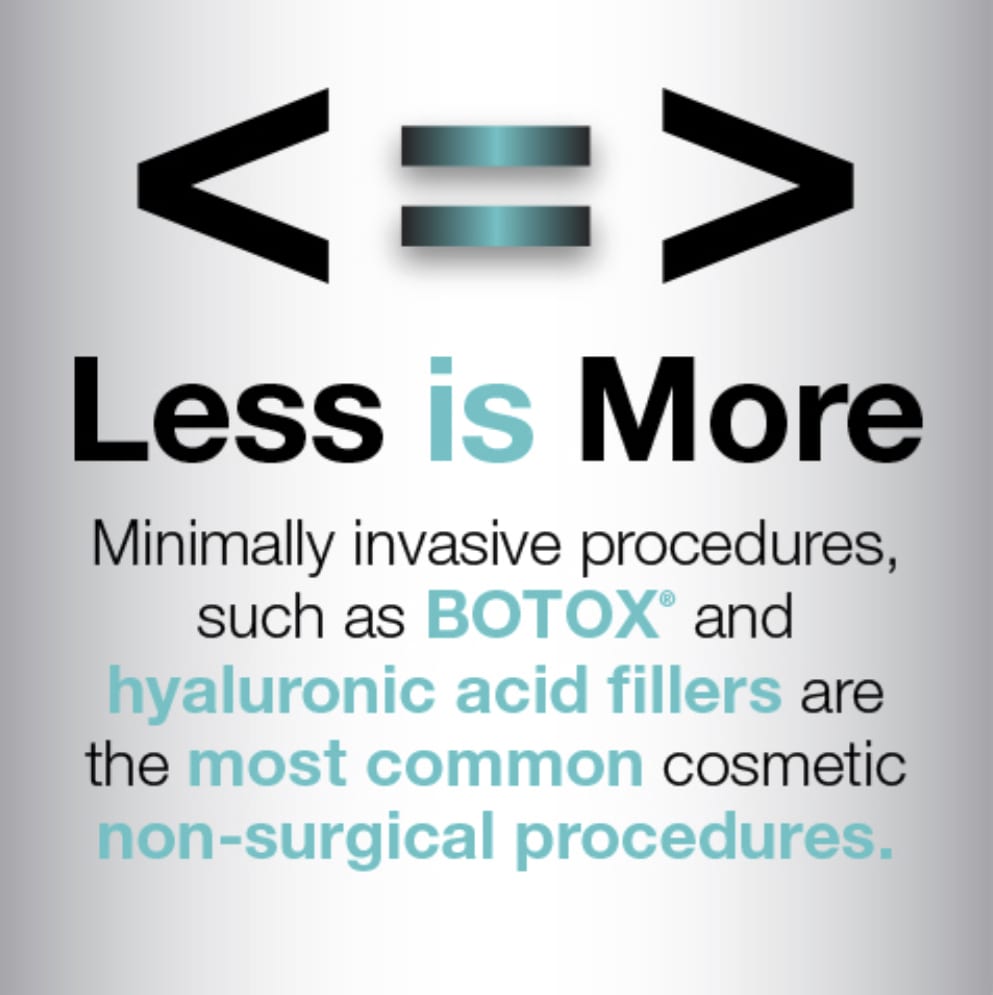Less is more when it comes to plastic surgery. Whether it’s non-surgical treatments or plastic surgery, patients want to look themselves, but only better. The quicker recovery with generally less downtime and bruising with minimally invasive procedures are more appealing too.
Aesthetic procedures of Botox Cosmetic® and hyaluronic acid fillers (ex. Restylane®, Juvederm®, Belotero®) continue to grow and be the most popular non-surgical treatments among men and women. This 2015 survey was performed by the American Academy of Facial Plastic and Reconstructive Surgery of its members, board certified surgeons who specialize in plastic surgery of the face, head, and neck.
It’s been a long time since a traditional facelift was the only option to look younger. Patients now have a large variety of non-surgical options to rejuvenate their appearance. For example, a neck lift was previously the only method to reduce neck fat and improve a double-chin. However, a non-surgical treatment is now available with Kybella® that helps reduce fat under the chin in appropriate patients. In addition, silicone cheek implants used to be the only option to create full, round cheeks. Facial fillers (ex. Restylane®, Juvederm®) can add cheek volume that is lost from natural aging.
What are the non-surgical facial cosmetic options in plastic surgery offices?
- Wrinkle relaxers: Botox Cosmetic®, Dysport®, Xeomin®
- Facial fillers: Restylane®, Juvederm®, Belotero®, Radiesse®, Sculptra®
- Energy rejuvenators: Laser (fraxel, IPL, CO2, etc), Ulthera®, Thermage®, Coolsculpting®
- Chemical peel: TCA, glycol acid, lactic acid, phenol
- Misc: Kybella®
Is the “less is more” concept apply to only non-surgical treatments? No. All patients want natural results, which can be achieved with or without surgery. Patients shouldn’t discount plastic surgery all together. Cosmetic surgery may be the only option or the most appropriate option for some patients. Patients can be confused with the variety of options available to look their best. A comprehensive evaluation by a plastic surgeon can help educate and guide patients to make the best decision for themselves.
Contact the office to see if a minimally invasive procedure is an appropriate option for you.


Leave a Reply